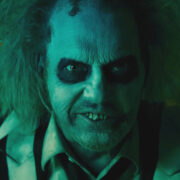POSSUM: A Niche British Nightmare
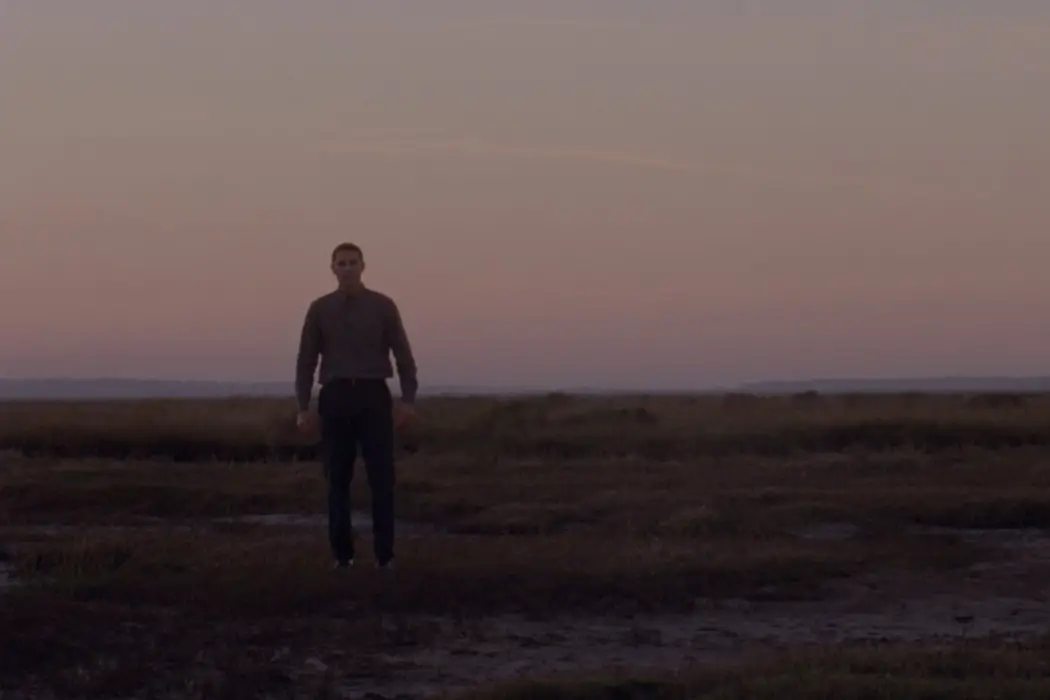
There is a breed of British horror films/shows that are quite unlike anything else. Drawing influences from classic horror and incorporating surreal elements, they also keep a foot firmly in social realism and often reflect current economic images of a broken Britain.
The TV show The League of Gentleman (1999 onwards) blended the bizarre with a set of grotesque characters and storylines, but confined them within a familiar village setting that became more dilapidated as the series progressed. More recently the film Ghost Stories (2017) offered a three-part portmanteau of chilling supernatural tales, recalling a long past English structure akin to the Ealing classic Dead of Night (1945). Along with Andy Nyman, the film is directed by Jeremy Dyson, one of the co-creators of The League of Gentlemen, and it shares a kindred spirit of offbeat, eerie territory with the show. But its stories are also wrapped within fragments of modern Britain, in rundown buildings, empty pubs and bleak seaside towns.
Coming into this terrain is Possum, which continues the feel of old British horror in a derelict setting and which combines surreal imagery. It is a film whose bleak backdrop is matched by a jet-black psyche.
Home is where the (dark) heart is
Possum begins with the narration of a poem against an opening title sequence that evokes an old ’70s feel. Images of dark water and woodlands create an unsettling mood, accompanied by a brooding soundtrack. We are first introduced to Philip (Sean Harris), a disgraced puppeteer who is on the train, returning to his childhood home and who is carrying an ominous leather bag. He tries to interact with a teenage boy, but he comes across awkward and stilted. It is easy to see how he may have fallen on hard times, but hard to imagine how he was ever a children’s entertainer.
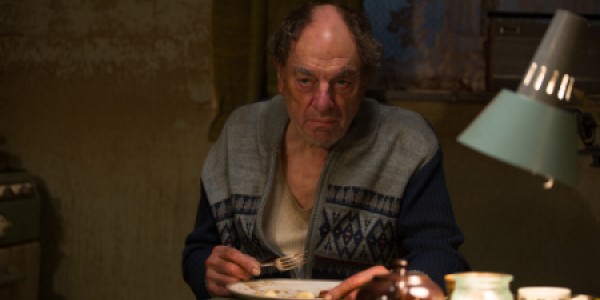
When he reaches his home, it is neglected and ramshackle, like it has been frozen in time since he was last there, and things immediately start getting strange. Images of black balloons that become shrouded in smoke envelope the screen and Phillip’s bag, containing the eponymous puppet Possum, seems to have a life of itself; it moves from place to place, from where Phillip last left it.
When Philip is reunited with his vindictive uncle Maurice (Alun Armstrong) it is evident that their relationship is fraught and at the root of some of Philip’s internal distress, as they play out the roles of bully and the bullied. Back home, Philip has decided to try and rid his life of his puppet creation, but this proves to be an impossible task, as Possum continues to reappear every time he has seemingly been disregarded. Meanwhile the disappearance of a local teenage boy causes Maurice to suspect Philip of foul play, and Philip himself begins to question everything. Repressed childhood traumas start to reemerge and his grip on reality hangs perilously in the balance, as Possum appears to be the one driving and consuming his existence.
Bleak and Bleaker
Possum is the first feature film of Matthew Holness, the creator of the wonderous cult horror spoof Garth Merenghi’s Dark Place, and whilst the film conjures up a retro feel, there is no humour to be found in this dark heart. Whilst not an intentional period piece, the aesthetic of Possum continually leans towards a ’70s horror look with the absence of any modern signifiers such as mobile phones or up-to-date technology. This enhances the disturbing atmosphere of the film. Along with the barren setting of Norfolk marshland, the weeds beneath the surface elude to the clinging, binding ties that continually threaten to pull Philip down. Scenes of disused and abandoned buildings give the impression that this is not a place where any hope springs; it is instead a place where people become consumed, trapped and plagued by demons.
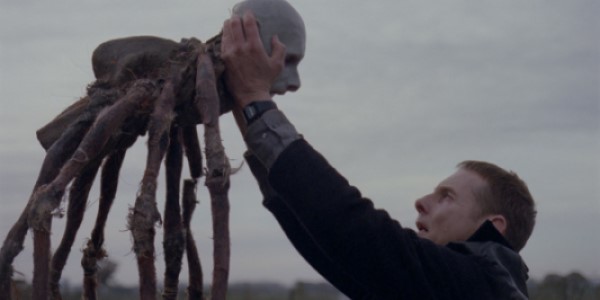
The score is provided by the BBC Radiophonic Workshop, known for their pioneering and experimental technology and electronic music, and it is suitably disturbing and unnerving, matching the murky darkness of the film and building at points to an unbearable crescendo.
Arachnophobe Anguish
Sean Harris, perhaps best known to audiences as villain Solomon Lane from the last two Mission Impossible films, has cultivated a career around his outsider looks and Possum is no exception. However, this time instead of exuding a sinister edge, he is a man who seems haunted by every step he takes. His internal anguish is etched all over his face, his red rimmed eyes and ghostly pale demeanour matched by a hunched, almost twisted physique, which becomes more pronounced the more he tries to distance himself from Possum. It is as though the two are so intrinsically linked that Philip begins to suffer withdrawal after from his creation, the age old saying ‘you can’t live with them, you can’t live without them’ ringing true of their twisted relationship.
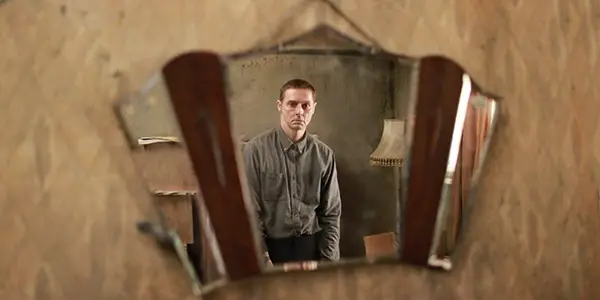
Whilst Harris is on intensely troubled form, the performance that will worryingly linger in your memory is that of Possum itself. First shown to the audience in fragments, the giant spider like legs sprawling out of the bag and then in full form with a doll like head atop the tarantula body, Possum is the stuff of real nightmares. It could have come straight from Jan Svankmajer’s warped workshop, and will no doubt come to the viewer in the darkest corners of our troubled dreams.
Holness has created a new modern horror figure for our time that could stand alongside recent scaremongers such as The Babadook. It is a shame, then, that the rest of the film cannot quite match the intense power of this puppet. Recurring themes and motifs become a little too recurring as we, along with Philip, become locked in a continual cycle of scenes which, for a film with a short running time, will test the patience of many.
Possum: Conclusion
Possum is an impressively chilling debut from Holness and credit must go to the director for taking a risk on a darker affair. The initial premise could have been adapted for a comedy/horror audience, taking the route of the possessed puppet and playing into Holness’ previous work of combining humour in a horror setting. Instead he has gone for a much more sombre palette, one that will not appeal to many but will garner respect from others. Perhaps Possum would have worked better as a short film; its message would have easily come across to chilling effect if it did not dwell on the same scenes repeatedly.
Rather than a cult following, it is a film that will be hard to return to due to its eternally gloomy atmosphere, focusing so intently on one person’s anguish it is a tough watch to subject yourself to. Instead it will be regarded as a very British curio, a niche in the vast landscape of the bourgeoning modern horror world.
Do distinctly British horror films interest you? Will you give Possum a watch?
Possum was released in the UK on 26 October 2018, and will be released in the US in theaters and VOD on November 2nd.
Does content like this matter to you?
Become a Member and support film journalism. Unlock access to all of Film Inquiry`s great articles. Join a community of like-minded readers who are passionate about cinema - get access to our private members Network, give back to independent filmmakers, and more.











